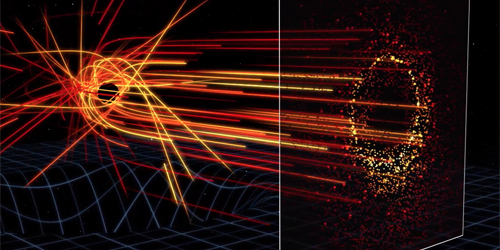Getting a Black Hole’s Spin from its Photon Ring
In April 2019, the Event Horizon Telescope (EHT) captured the first image of a black hole, showing the silhouette of a supermassive black hole against a glowing ring of light. From the geometry of the ring, EHT researchers determined the black hole’s mass. But a more detailed characterization of the ring could allow direct and precise measurements of the second distinctive property of a black hole—its spin, according to a study by Alex Lupsasca and co-workers at Harvard University.
The light ring around a black hole is made up of photons that propagate close to the black hole before escaping. Recently, the Harvard team and other collaborators showed that this photon ring is composed of a series of increasingly dimmer and smaller subrings. The largest and brightest ring is a diffuse halo produced by photons that are slightly scattered by the black hole. Each of the other subrings, however, is produced by photons that complete a given number of half orbits around the black hole.
Now, the researchers have analyzed the ring in more detail, looking specifically at its polarization. Their general-relativistic calculations predict that the polarization of light changes from one subring to the next and that this change depends entirely on how fast the black hole is spinning. By measuring the photon ring polarization, one could infer the black hole spin much more robustly and precisely than with other methods, Lupsasca says. Until now, researchers have been able to estimate the spins of supermassive black holes by measuring nearby x-ray emissions. But the spins of only a few dozen black holes could be determined in this way, and the estimates have large uncertainties because they are based on hard-to-test assumptions about the matter around the black hole.
This research is published in Physical Review D.
–Matteo Rini
Matteo Rini is the Deputy Editor of Physics.




